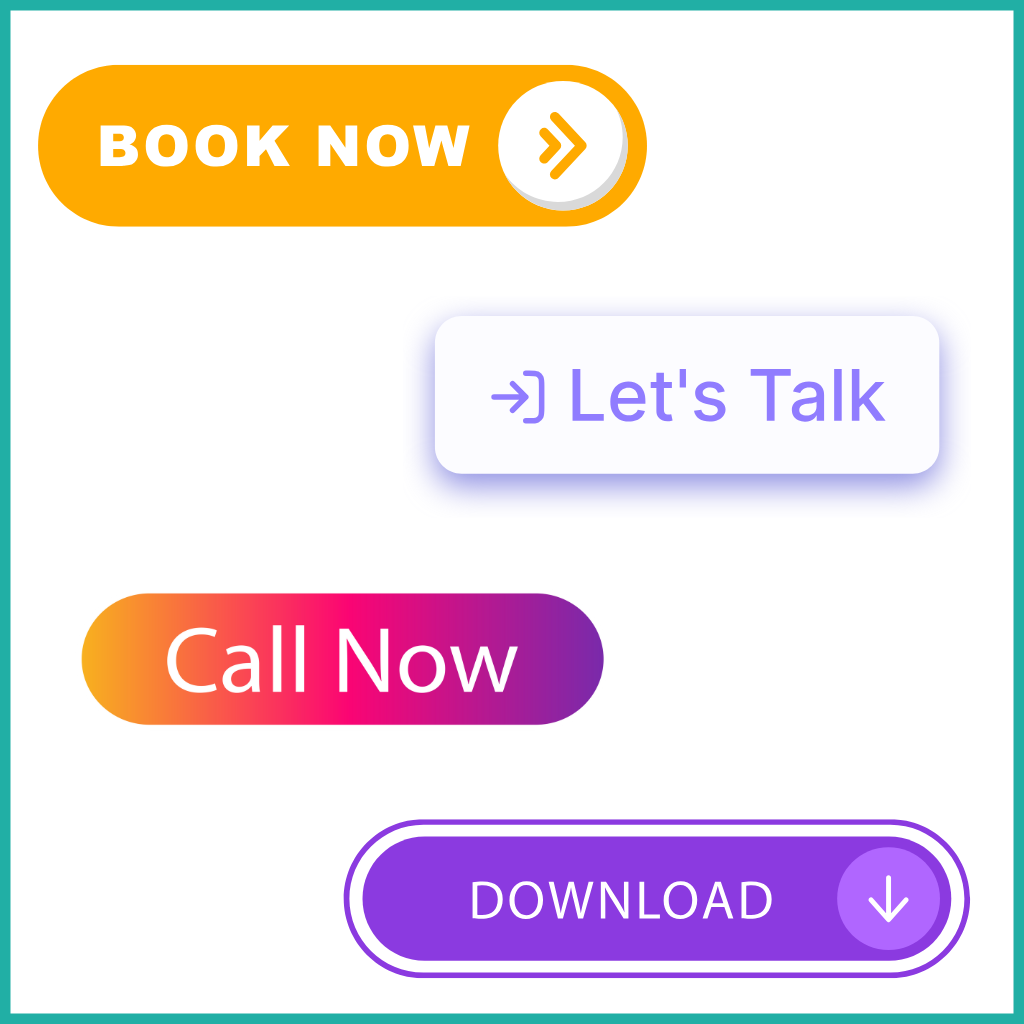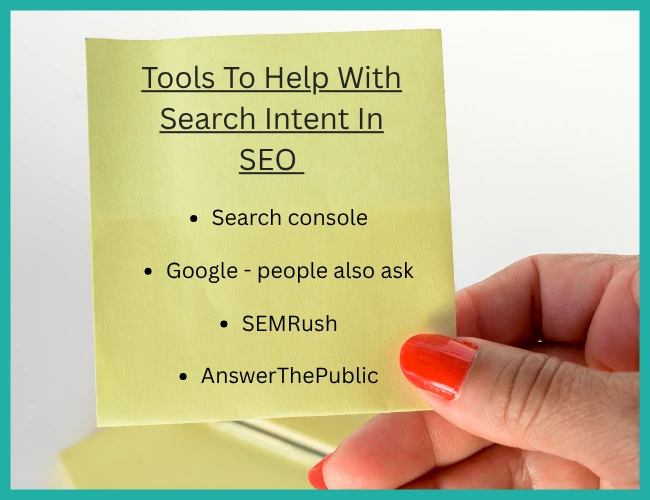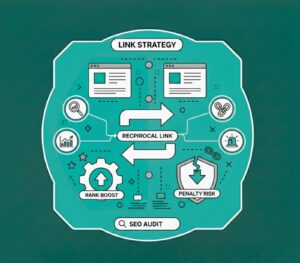Search Intent SEO Best Practices
Blogs | SEO
Written By: Lauren Davison
Blogs | SEO
Written By: Lauren Davison
Introduction
When it comes to SEO, keywords are often the star of the show. But in 2025, simply stuffing keywords into your content isn’t enough.
Google and other search engines have evolved. They now focus heavily on understanding why someone searches for something and what their true intent is behind the query. That’s where search intent SEO comes in.
If you’re serious about improving your search rankings and attracting the right visitors, mastering search intent SEO is essential. In this blog, we’ll break down:
- What search intent really means in the context of SEO
- The four main types of intent and how to spot them
- How to optimise your content to match user needs
- Common mistakes to avoid when targeting intent

What is Search Intent SEO?
Search intent in SEO refers to the purpose or goal behind a user’s online search. When someone types a phrase into Google, they have an underlying motivation. Maybe they want to buy something, find specific information, compare products, or visit a particular website.
Understanding this motivation is key to providing content that satisfies the user. That’s exactly what search engines want to deliver. If your content doesn’t match the search intent, it’s unlikely to rank well, no matter how well you’ve optimised your keywords.
Types of Search Intent
There are generally four main types of search intent you need to be aware of. Each of these requires a different content approach to best serve the user’s needs.
- Informational Intent
The user wants to learn something or get answers to questions. Examples include ‘how to tie a tie’ or ‘what is search intent SEO?’ - Navigational Intent
The user is trying to find a specific website or page. For example, ‘Midland Marketing blog’ or ‘Facebook login.’ - Transactional Intent
The user is ready to buy or complete an action, such as ‘buy running shoes online’ or ‘best SEO tools subscription.’ - Commercial Investigation
The user is researching products or services before making a purchase. Searches like ‘best SEO agencies 2025’ or ‘Shopify vs WooCommerce’ fit here.
What Is the importance of search intent in sEO?
Search intent in SEO is all about understanding the user’s goal behind a search. This could be buying, learning, compare, or finding something specific.
If your content doesn’t match that intent, it’s like trying to sell ice cream to someone who just wants directions. It simply won’t work.
When your content aligns perfectly with search intent, several things happen:
- Higher rankings: Google rewards content that satisfies user queries effectively.
- Better engagement: Visitors spend more time on your site because your content meets their needs.
- Lower bounce rates: Users find what they want quickly, so they don’t leave immediately.
- More conversions: When transactional intent is met, you get more sales, sign-ups, or enquiries.

How to Understand What People Are Searching For
Before you can optimise for search intent, you need to identify it for each keyword or topic. Here’s a simple way to do it:
Step 1: Analyse the Keyword
Look at the keyword or phrase and ask: What is the user trying to do here? Are they seeking information, a specific site, or ready to buy?
If you’re not sure where to start, our Keyword Research Checklist can help you break down the process and identify the intent behind your keywords more clearly.
Step 2: Check the Search Results (SERPs)
Google is great at showing what it thinks the intent is. Search your keyword and carefully analyse the top-ranking pages. This gives you a strong hint about the dominant search intent:
- Are they blog posts, product pages, or service pages?
- Are there videos, how-to guides, or FAQs?
- Do the results include ads or shopping results?
Step 3: Consider User Queries and Questions
Use tools like AnswerThePublic, Google’s People Also Ask, or even your own customer FAQs to understand what questions users have around your keyword.
Step 4: Match Your Content to Intent
Once you know the intent, craft content that directly satisfies it.
What the SERP Can Tell You About Intent
By carefully studying the SERP, you can better understand what Google believes users want. Whether it’s a guide, blog post or product page, it shows the format users find most helpful.
Here are some key signals to look out for:
Featured Snippets usually appear for informational searches where users want quick, direct answers.
Shopping carousels and product listings indicate transactional intent, meaning users are ready to buy or compare products.
“People Also Ask” boxes highlight related questions people frequently search for, offering clues for helpful content ideas.
Local map packs or business listings suggest navigational or local intent, where users want to find nearby stores or services.

How to Optimise Content for Search Intent SEO
Optimising with search intent in mind isn’t just about keywords. It’s about creating a user experience that matches what people expect when they search. Here’s how:
1. Create Content Types That Match Intent
- Informational searches: Write in-depth blog posts, guides, tutorials, or videos that answer questions clearly and comprehensively.
- Navigational searches: Make sure your brand’s homepage, landing pages, or key pages are easy to find and clearly named.
- Transactional searches: Use product pages with clear CTAs, pricing info, and reviews.
- Commercial investigation: Create comparison articles, case studies, or buyer’s guides.
2. Use the Right Language and Tone
If a user wants quick answers (informational), use simple, straightforward language. If they’re comparing products (commercial investigation), use more detailed, factual language that builds trust. And remember, your brand voice and tone should remain consistent while adapting slightly to suit each user’s intent.
3. Structure Content for Easy Scanning
Break content into clear headings and sections that match user questions. Use bullet points, numbered lists, and visuals. This makes it easier for users to find what they need fast.
4. Optimise Meta Tags for Intent
Your title tag and meta description should reflect the search intent. For example, a transactional keyword might need a CTA like ‘Buy Now’ or ‘Get a Quote,’ whereas an informational one might promise ‘Expert Tips’ or ‘How-To Guide.’
5. Incorporate Related Keywords and Topics
Search intent SEO isn’t just about one keyword. It’s about exploring the topic in depth. Use related terms and answer common questions to make your content more relevant and helpful.
6. Improve User Experience (UX)
Fast-loading pages, mobile-friendly design, and intuitive navigation all help keep users engaged once they arrive. Good UX supports search intent by removing barriers to information.
Real-Life Example: Search Intent SEO in Action
Imagine you run a local bakery and want to rank for the keyword “best bakery near me.”
By matching your content to different search intents, you help customers find exactly what they’re looking for, whether they’re just browsing or ready to buy.
For informational intent, you might write a blog about what makes a great bakery, or how to spot fresh ingredients. This helps educate potential customers and builds trust.
For commercial intent, focus on content that compares your bakery to others nearby. Highlighting things like unique recipes, dietary options, or glowing reviews can guide decision-makers.
For transactional intent, your website should make it easy to take action with clear calls to action like ‘Order Online,’ or ‘Visit Our Shop.’

Common Mistakes to Avoid With Search Intent
Search intent might seem simple at first, but it’s easy to miss the mark. Here are some common pitfalls to watch out for when applying search intent SEO principles:
- Ignoring search intent and focusing only on keyword density. This leads to irrelevant content that doesn’t satisfy user needs. Your content needs to genuinely answer what people are looking for.
- Using the wrong content type for the intent. For example, a product page trying to rank for an informational query usually won’t perform well. Make sure your content format matches what users expect, whether that’s a blog or a product page.
- Overlooking mobile and voice search intent. Mobile users often have different expectations. They want quick, easy answers. Optimising for these platforms means focusing on clear, concise information that’s easy to access on the go.
- Not updating content to reflect changing intent. Search intent can evolve, so regularly review and refresh your pages.
Keeping your content up to date ensures it stays relevant and continues to meet users’ needs over time.
Tools to Help with Search Intent SEO
Several tools can make your job easier when optimising for search intent. Here’s some of our favourites:
- Google Search Console: See which queries bring users to your site and their behaviour.
- Google’s People Also Ask: Great for uncovering intent-driven questions users have.
- SEMrush: Analyse keyword intent and see top-ranking content types.
- AnswerThePublic: Discover common questions related to your keywords.

Wrapping Up: Why Search Intent SEO Should Be a Priority
SEO is no longer just about sprinkling keywords on a page. It’s about understanding why people search and delivering exactly what they want.
By mastering search intent SEO, you can create content that not only ranks higher but also genuinely serves your audience. This leads to better engagement, more conversions, and lasting online success.
So next time you plan content or pick keywords, ask yourself: What is the user really looking for? Then tailor your strategy accordingly. Your SEO results will thank you.
Ready to align your content with real user intent? Check out our SEO services and let’s get your strategy on track!

Written by - Lauren Davison
Introducing Lauren – one of our content writers who has a flair for SEO and creative strategy!
With a Master’s Degree in Creative Writing, Lauren has niched down into SEO and content writing.
Outside of work, she loves watching the darts, reading and the pub on the weekend.
Want some more?
Latest Insights & News

Revolutionising Marketing: The Rise of Situational Content Strategies
Situational content strategies involve tailoring content to specific moments, contexts, or audience behaviours. By aligning content with real-time trends, seasonal needs, and user intent, brands can increase relevance, improve engagement, and strengthen SEO performance.

Smart Ways to Identify and Fill Content Gaps Fast: A Complete Strategy Guide
Content gaps refer to missing information, unanswered questions, or underserved topics in your existing content. Identifying these gaps helps you create targeted, high-value pages that improve search visibility, satisfy user intent, and outperform competitors.

Reciprocal Links in SEO: Do They Still Boost Rankings or Risk Penalties?
For the keyword “reciprocal links SEO,” focus on explaining how reciprocal linking works today. Reciprocal links are not harmful by default, but Google can flag excessive or manipulative link exchanges. To stay safe, only exchange links when they are contextually relevant, natural, and valuable to users.




